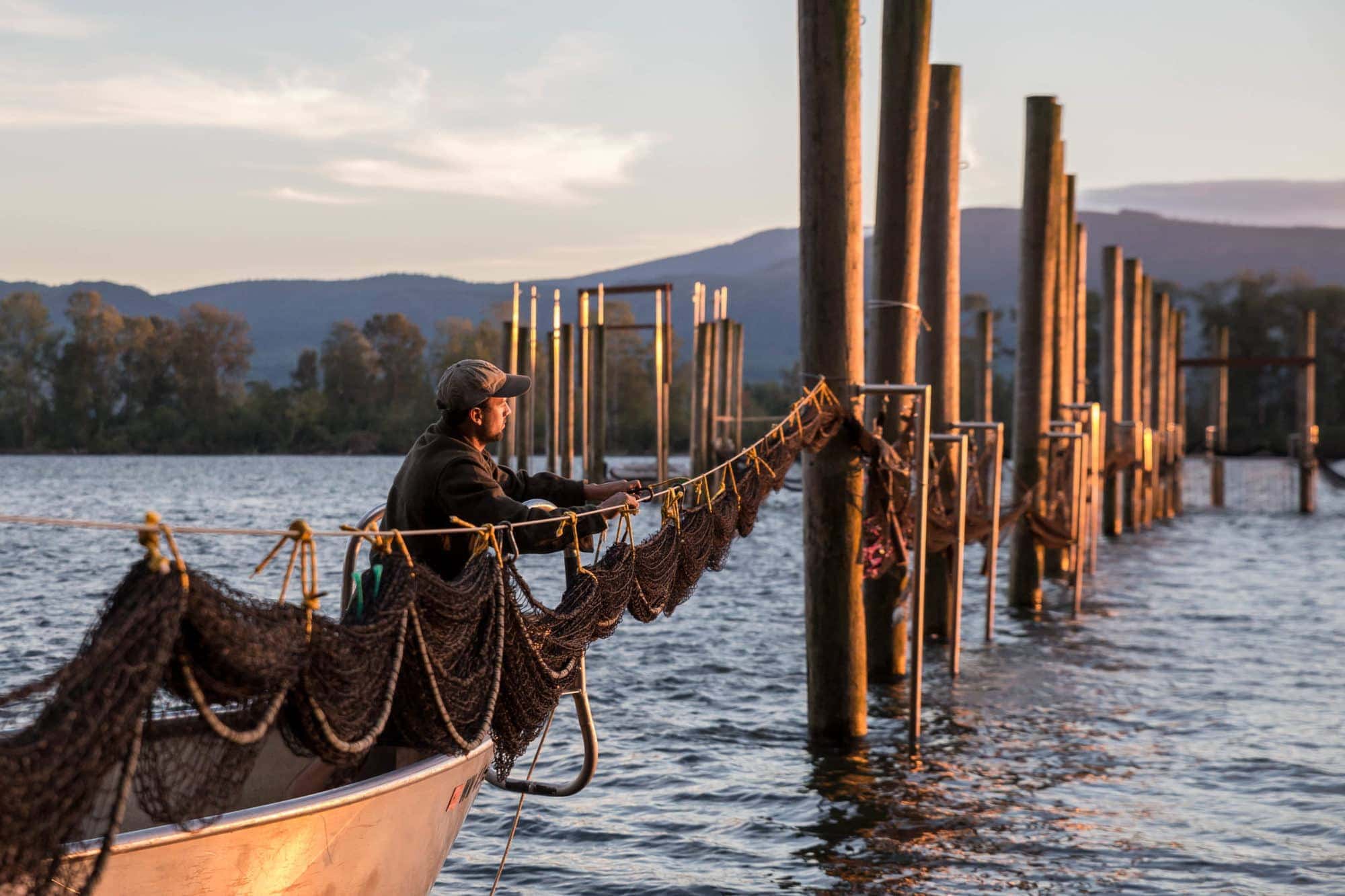
Media Contacts:
Kurt Beardslee, Wild Fish Conservancy Executive Director, 206-310-9301 / kurt@wildfishconservancy.org
Adrian Tuohy, Wild Fish Conservancy Biologist, 425-788-1167 / adrian@wildfishconservancy.org
June 18, 2019
For immediate release
Duvall, WA — Newly published research by Wild Fish Conservancy (WFC) scientists shows that an experimental fish trap on the Columbia River allows fishers to selectively capture commercially viable quantities of salmon, and unlike widely-used commercial fishing gears, can release threatened and endangered fish from the trap with almost 100% estimated survival.
The paper, “Survival of salmonids from an experimental commercial fish trap,” was published last week in Fisheries by WFC’s Adrian Tuohy and Dr. Nick Gayeski, and the University of Washington’s John Skalski. The study’s objective was to develop an alternative commercial fishing tool that meets both the needs of commercial fishers and wild fish recovery.
Conventional commercial fishing gears used today in Pacific Northwest salmon fisheries lack the fundamental ability to release wild fish unharmed and commonly result in the unintended mortality of wild fish, hugely impeding wild fish recovery and constraining commercial fishing opportunities.
Hung from untreated pilings driven into the bed of the Cathlamet Channel of the Columbia River, the fish trap’s series of fine-meshed nets passively guides fish until they are gently ‘spilled’ into a fully submerged netting chamber. From here, researchers placed tags under the skin of fish passing through the trap, allowing them to monitor the migration of over 2000 Chinook and nearly 800 steelhead for 250 miles 400 km) up the river as they passed by weirs and dams.
Using standard techniques for measuring the effects of commercial fishing gears on fish survival, the researchers found estimated post-release survival (99.5% for Chinook salmon and 94.4% for steelhead) far higher than those of any previously tested commercial fishing gears on the Columbia River. These results were particularly impressive as the study measured survival over a greater distance and for a longer duration than any of these previous studies.
“Our findings are extremely promising,” WFC biologist Adrian Tuohy explains. “Selective commercial fishing gears, like fish traps and reefnets, could be a major step toward solving bycatch mortality and hatchery problems in our salmon fisheries, dramatically increasing the number of wild salmon and steelhead reaching spawning ground and offering commercial fishers increased opportunity to fish using a method that aids wild fish recovery.”
For centuries, historic versions of fish traps were used by Native Americans throughout the Pacific Northwest and then by white settlers in the early 1900’s. Using ancient fish traps as a basic model, WFC biologists designed, constructed, and engineered the Columbia River fish trap to meet the needs of today’s salmon fisheries. For the past three years, WFC has fished the trap on an experimental basis with a fisherman whose grandfather once fished a fish trap at the same location almost a century ago.
“The results of this research are great news for fish, fishermen, killer whales, and the economy of coastal communities,” comments WFC Executive Director Kurt Beardslee. “I realize this sounds too good to be true, but this new research proves that this ancient tool is the most efficient and most sustainable way to fish, now and into the future. Already, we’ve seen significant interest from tribal nations, First Nations, and commercial fishers throughout the Pacific Coast interested in fishing commercially with selective gears.
###
Wild Fish Conservancy is a nonprofit conservation ecology organization headquartered in Washington State and dedicated to preserving, protecting and restoring the Northwest’s wild fish and the ecosystems they depend on, through science, education and advocacy.
Read the full paper
Photographs for press and educational purposes.